If you take a trip to Gifu City, it won’t take long before you spot a fish motif scattered around, depicting ayu sweetfish (or just plain “ayu” or “sweetfish”).
They are on menus of stylish restaurants and cafés that now inhabit the former merchant houses of the Kawara-machi street. They pop up in the form of ayu-gashi or waka-ayu, fish-shaped treats made by wrapping a layer of castella cake around a soft paste called gyuhi that’s made from sticky rice. And they adorn tourist goods lining the shops, their elegant silhouettes aligned in an eye-catching tessellation.
Before I knew it, I, too, was feasting on ayu, and had unironically become the owner of a white and pink cloth bag, adorned – yes – with two dear little ayu.
During my three-day trip, I ate ayu in at least three different ways, savoring its delicate sweet flavor and distinct texture. In the midst of this ayu-mania, I developed a hunger to find out more about this highly valued fish that’s considered a symbol of summer in Japan.

Table of Contents
What kind of fish is ayu?
Ayu (鮎, アユ) is a small, slim fish that typically only survives in extremely clean water, earning it the rather elegant nickname seiryu no jouou (清流の女王) – “the queen of clear rivers.”
Ayu do generally spend most of their time in rivers, but they are inherently migratory: the fish lay eggs in the lower part of the rivers, which then hatch and spend the winter in coastal regions, before the young fish swim upstream again in summer.
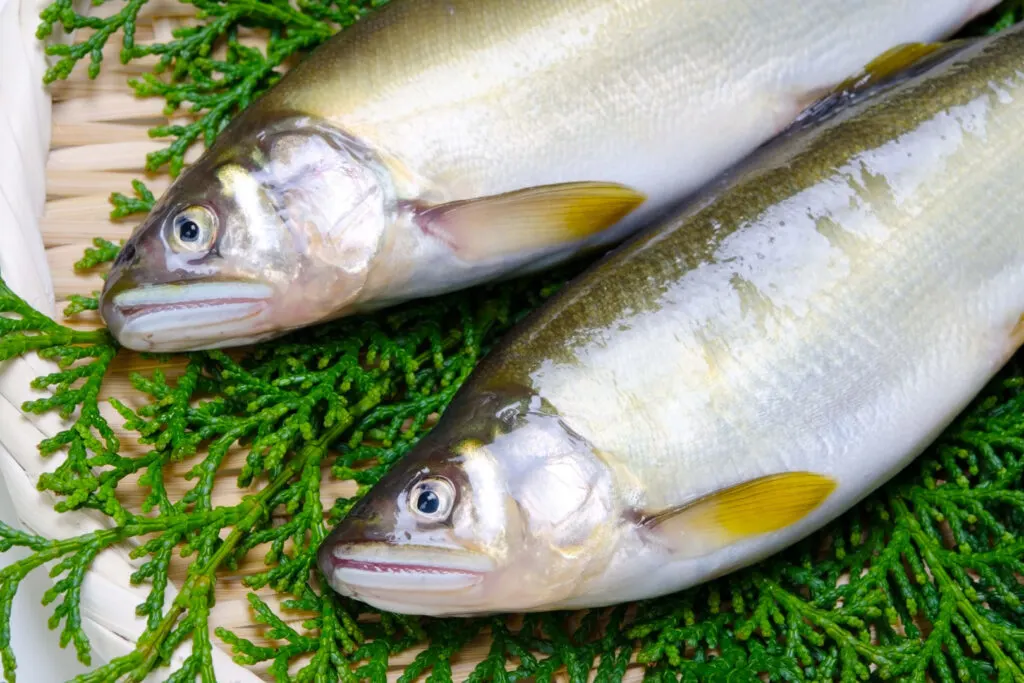
There is, however, the intriguing case of ko-ayu (コアユ), which inhabit Lake Biwa to the east of Kyoto – these little critters are landlocked and only grow to 10 cm as opposed to 30 cm for river-dwellers. Another interesting difference is ko-ayu can live for up to two to three years, as opposed to most ayu fish who only live about a year. This short lifespan means that the word “ayu” is sometimes written as 年魚, literally “year fish.”
That’s not the last of its names, though. It is also known as kougyo (香魚), literally, “fragrant fish,” which conveniently brings me to the next and very important part: how ayu taste.
The short answer is, of course, very good. The beautifully clear water ayu inhabit allows a kind of moss to flourish, which is an important nutrient source for the fish. It’s also credited with giving them a gentle flavor and a mellow aroma, often described as similar to cucumber or watermelon. It’s easy to see (or smell) where the name “sweetfish” came from.
Ayu fishing: how, where and when
While ayu aquaculture does exist and results in a relatively cheaper product, wild ayu fish are highly prized. Native to East Asia, the fish are found widely throughout Japan from Hokkaido in the north, all the way down to subtropical Okinawa in the south. They have been designated a prefectural fish in Gifu, Gunma and Nara, indicating their importance to local cuisine.
There are several ways to catch them, but a popular method involves using a lure on the end of a long rod. This technique relies on ayu’s fiercely territorial nature – the fish spies the decoy and comes to attack it, hooking itself in the process.
Yet the most dramatic fishing method dates back over 1,000 years. Ukai (鵜飼, cormorant fishing) sees an usho (鵜署, cormorant fisher) set out on a boat on a river at night with several cormorants and a flaming torch to guide his way. Each bird is tied to a rope and with a snare around its neck to prevent it from swallowing. They then dive for ayu, which they store in their throats until the fisherman retrieves them.
It’s a fading tradition due to a declining population and a strict system which only sees males in the family inherit the role, but it’s a popular tourist attraction in Gifu City and Arashiyama in the west of Kyoto City, as well as a handful of other locations.
Note that details provided on ukai cormorant fishing are for informational purposes only and do not represent Japanese Food Guide’s position on this practice. JFG strongly urges visitors to avail themselves of what this tradition entails – including the capturing of wild birds, wing clipping and the forcible removal of fish from the cormorants’ throats – before deciding to participate in cormorant fishing tourist activities.

The ayu fishing season generally kicks off in early summer and ends in the autumn. It’s around that time that ayu start to spawn and so fishing is banned until the following spring to ensure next year’s population.
A few places, however, do hold a limited winter season. For example, fishing for ochi-ayu (落ち鮎 – ayu that have spawned) on the Shimanto River in Kochi Prefecture kicks off on December 1st until the end of January. This has been halted in recent years due to sharply declining fish populations blamed on several factors, ranging from forest development to pollution and disease. These issues are not limited to Kochi, and several places are trying to combat falling stocks by raising ayu to their juvenile stage and subsequently releasing them into the river.
The juicy bit: how to eat ayu fish
While considered a symbol of summer, the ayu season is long, and the recommended way of enjoying these tasty fish changes with the time of year. They’re very versatile and so you’ll find a range of ayu dishes to tempt you.
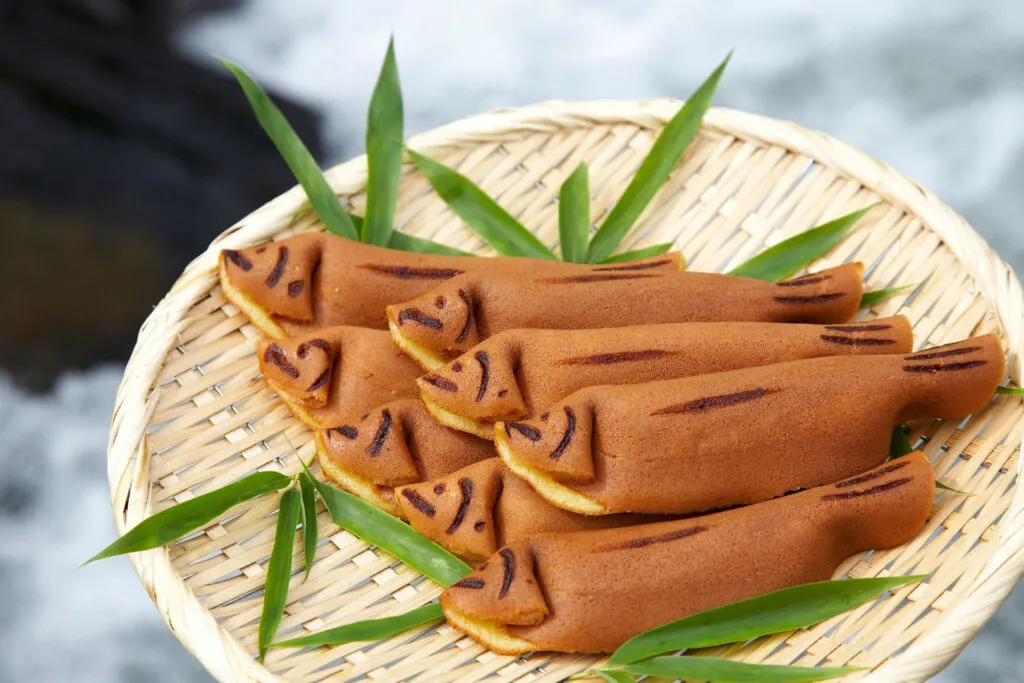
Early summer
Ayu caught in this season are waka-ayu (若鮎), literally “young ayu” and the same name as the fish-shaped castella sweet! They aren’t fully grown and have yet to fatten up. A favorite cooking method is tempura as the crispiness of the batter contrasts beautifully with the softness of the flesh. There’s no need to worry about removing bones and organs; the fish can be eaten whole.
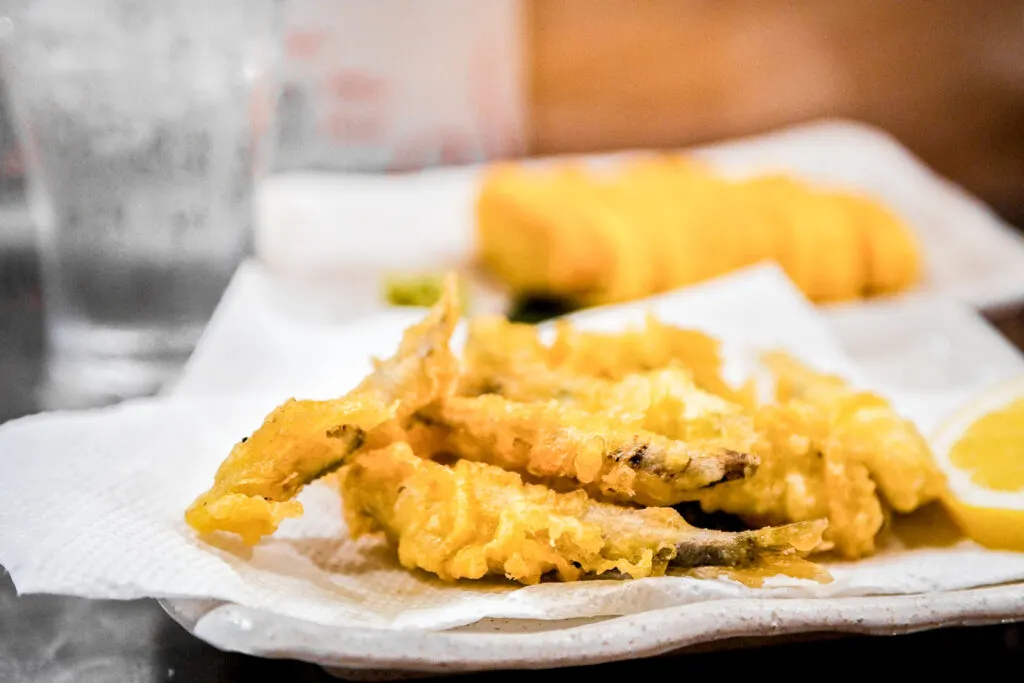
Midsummer
This is, of course, peak ayu season, when they are their fattest and juiciest, and have developed that sweet, watermelon-like aroma. The classic way to eat ayu at this time is shioyaki – salted and grilled. It’s delectable and will leave you smacking your lips for more. Again, the whole fish can be consumed, but most people will remove the flesh from the bones, and leave the head and tail. The organs can be bitter, so some people avoid those too.
Shioyaki is often a popular street snack, served at festivals or at little shacks serving hungry hikers on popular trails. Visually, it’s a striking image: the ayu are speared on wooden sticks and arranged vertically around a charcoal pit. A highlight for tourists in Gifu is a one-man boat that pulls up alongside dinner cruises for those watching the cormorant fishers. This solo captain cooks up ayu before everyone’s eyes and serves them hot off the grill. How’s that for a delivery service?!

Late summer, early autumn
This is heading into spawning season and ayu are heading downstream. Those caught at this time of year contain lots of roe and are known as komochi-ayu (子持ち鮎). They are often served stewed in a sweet miso sauce – rich, full of umami and slightly decadent.
Other ways of eating ayu fish
One popular dish found in several regions is ayu-meshi (鮎飯、鮎めし) – ayu cooked atop rice in a clay pot. The fish is also eaten raw in some places, but the Food Safety Commission advises against this preparation method, as ayu are known to host a kind of fluke worm that doesn’t discriminate between fish and humans. Most Japanese would likely agree that ayu shioyaki wins out by far anyway, but the choice is yours!
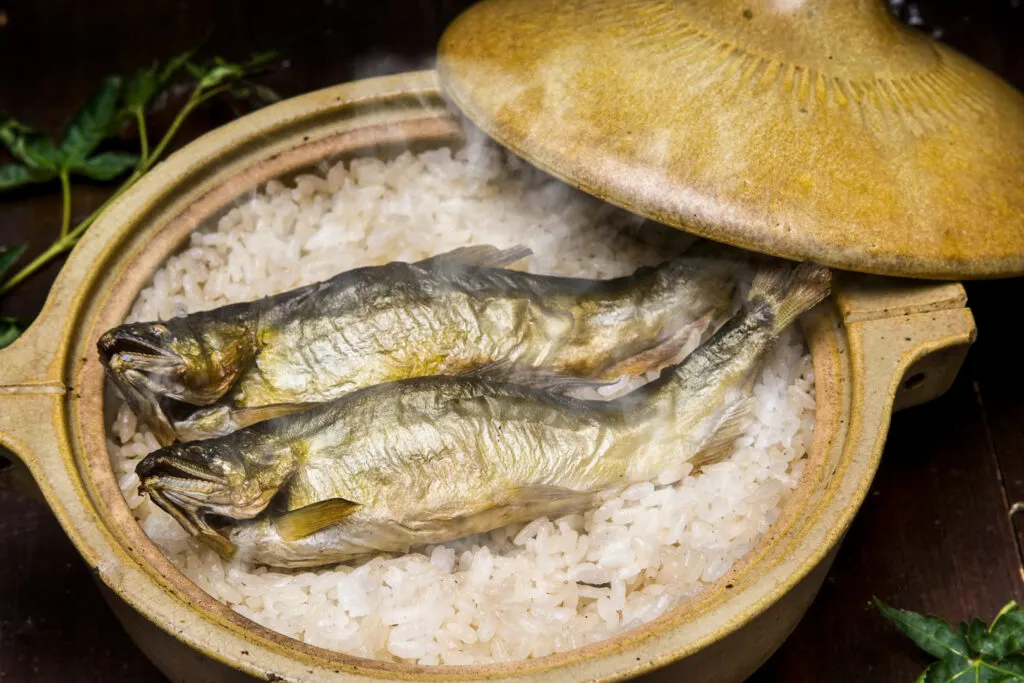
Ayu a fan yet?
For me, one charming aspect about ayu is that they are so evidently tied to the local area. Strolling along the Nagara River in Gifu City, I had a sense of immediacy about the food I was consuming and an appreciation of the importance of this fish in local people’s lives.
The moniker “queen of the clear river” stays in my mind – it well suits the ayu’s elegant shape and just how highly prized these fish are.
How you ever eaten ayu fish? Would you like to try?
Pin me for later
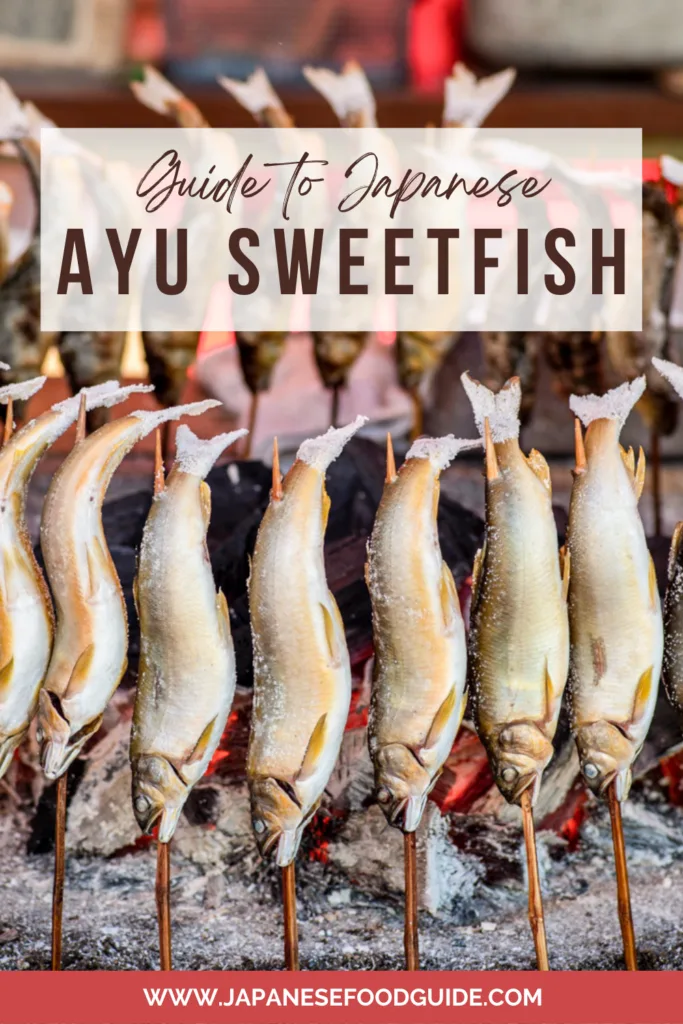
Phoebe Amoroso is a Tokyo-based reporter, multimedia journalist and storyteller. Hailing from the UK, she moved to Japan in 2014 and has since been shouting about the country to all who will listen.
She divides her time between covering breaking news and producing feature stories for TV; writing about everything from business and tech to food and travel; and guiding hungry visitors who want to sample the best of Japanese cuisine. When not working and/or eating, she can often be found running up a mountain or cycling by the sea.
